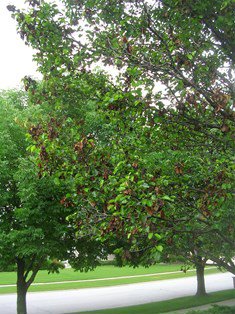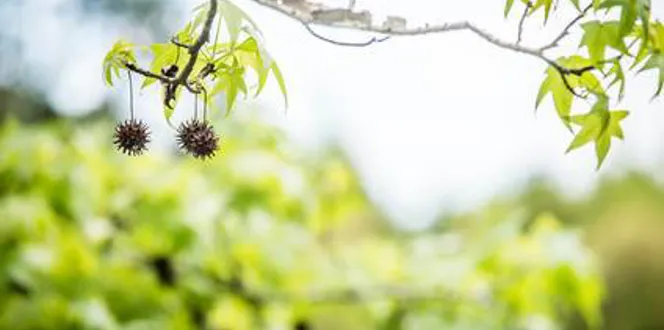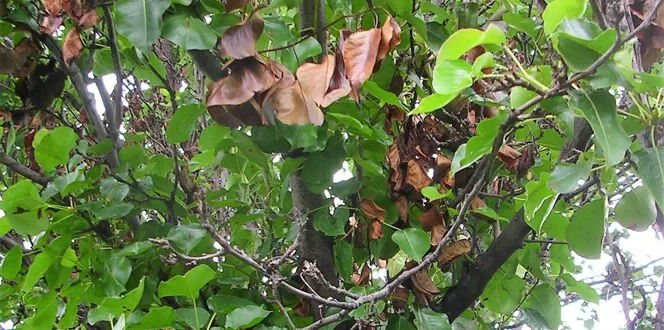Some trees really know how to make a statement–like the ‘Bradford’ Callery pear. With its gorgeous canopy full of delicate, snow-white flowers, it’s sure to catch your eye (or your nose) in spring.
Or perhaps something a bit less joyful drew you in. That’s what happened to Linda, a Davey blog reader from South Carolina.
Linda asked, “My Bradford pear trees have clumps of brown leaves all over it. What can you tell me?”
What went wrong with Linda’s trees? And, if your tree is showing similar symptoms, what can you do? Your Bradford pear is likely dealing with a common springtime fruit tree infection. Learn what you can do about it below.
What is ‘Bradford’ Callery pear fire blight?
The brown clumps on Linda’s trees point to an infection called fire blight.
Fire blight is a persistent disease that affects ‘Bradford’ Callery pear (and other ornamental pear trees). But it goes after other fruit trees as well like apple, crabapple, quince and hawthorn trees.
At first, this is mostly an aesthetic issue, but if it keeps happening year after year, it could kill your tree.
Why Ornamental Pear Tree Leaves Are Dying (Turning Brown, Black or Falling Off)
Fire blight emerges in spring just as temperatures warm up and seasonal rain trickles down.
It targets trees right as they begin to bloom, which noticeably damages new growth. As its name suggests, it can look like a fire has burned certain areas of your tree.

To see if your ornamental pear or fruit tree may be suffering from fire blight, look for:
- Leaves that are crisp black or brown and later fall off entirely
- Flowers that turn brown or black and begin to wither
- Twigs that turn maroon or black and curl over as if they’ve been burned
- Branches with sunken, cracked areas
- A whole tree that looks wilted, shriveled and sickly
How can you help your Bradford pear or fruit tree with fire blight?
- Patience. If you spot symptoms of fire blight in spring, sit tight. Trying to prune or pick out dead leaves right away could actually spread the bacteria.
- Time your treatment. It’s best to wait until late fall or winter to do this. But if you really want to get those branches sooner, try doing this during a summer dry spell when it’s over 85 degrees.
- Prune. Cut about 6 to 8 inches below the affected area to remove infected branches. Be sure to disinfect your pruning tool between cuts. Dip or spray it with 70-80% isopropyl rubbing alcohol to avoid spreading the disease to other branches.
- Avoid fertilizer. Fertilizing your tree can help fire blight spread and become more severe. So postpone any fertilization treatments until after you prune.
- Play the long game. If your tree keeps getting fire blight every year, be proactive! In spring right as the tree blooms, apply a spray containing a labeled bactericide. Re-apply every 3-5 days until the blooms are finished. This will hopefully reduce, but not eliminate, fire blight.





